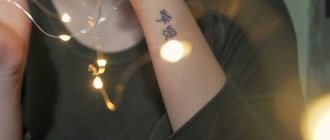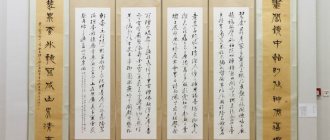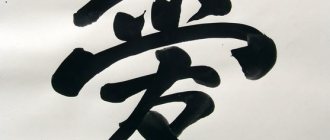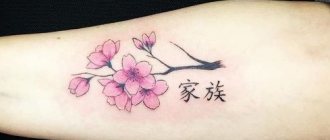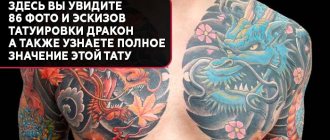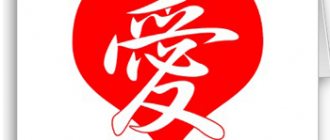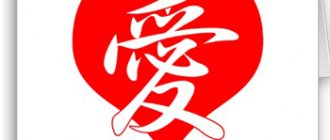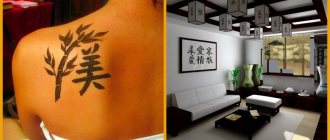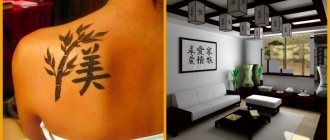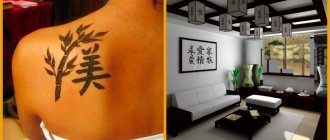Chinese and Japanese characters always carry a semantic load, reflecting individual meaning and purpose. Residents of these Asian countries endow each such symbol with special energy in order to get the desired result and fulfill their own dreams.
An important character in Japanese and Chinese writing is “strength,” which is of great importance to the people of China and Japan. These symbols are considered favorable and happy in both countries, but this sign must be used carefully so as not to upset the energy balance.
Features of Chinese characters
Each character in the Chinese language has its own specific meaning and semantic load, which are closely related to other features of this writing system. These complex symbols have enormous energy, which in reality can help achieve the desired results and implement all plans. The Chinese character for "strength" is an auspicious and positive pictogram. These symbols must be used with caution, since each sign in Chinese writing has an ambiguous and specific meaning, which is often understandable only to native speakers, professional linguists and philologists.
Reasons for the popularity of hieroglyphs for tattoos
Japanese hieroglyphs for tattoos in Russia have spread relatively recently.
They have become quite popular due to the rich history and unique culture of Japan. Such painting on the body is incredibly beautiful, and with the help of skillfully applied marks you can tell a lot about yourself. Experienced artists make sure that a tattoo in the form of a hieroglyph is not just a beautiful picture, but carries a deep meaning. The meaning of such drawings is so diverse that almost anyone can choose an image that suits them.
Character strength in Chinese
The character 力 (li— read as “li”) is translated as “strength, power.” It can also have the following meanings: energy, aspiration, opportunity, impact. This symbol (力 (lì) is an image of a person bending down to lift something using physical force. The vertical line 丿 symbolizes the hand, and the hook-like curve represents the hand. The Chinese character for "strength" can also be considered depicting a plow, that is, a heavy object that requires muscular strength.
Examples of expressions that use the pictogram 力 (li):
- 力量 (li liang - li liang) - strength, power, energy, and volume, (量, liang) - strength (plural);
- 力 (lì); 用力 (yongli - yun li) - try very hard, literally “use force” 用 (yòng - yun);
- 有力 (yo u li - yu li) - physically strong, large, literal translation - “possessing strength or power” (有, y ou);
- Horsepower is translated as 馬力 (ma li - ma li), 馬 (ma) - translated as horse, horse.
- The force of the wind is called 風力 (feng li feng li), 風 (feng) means gust of wind.
Composition and color scheme
Japanese hieroglyphs for tattoos are usually done in black. But there are also symbols using 5 primary colors, each of which carries a specific meaning.
| Color | Meaning |
| Blue-green | In Japan it is a single color and is represented by the word "aoi". It represents the wind and is considered the most fickle element, which can embody both the calmness of the sky and trees, and the destructive power of a hurricane. |
| Red | Symbolizes fire, sun, energy and development. According to the Japanese, this color protects from evil and brings joy, tranquility, and good luck to the home. |
| Yellow | Associated with earth, gold, constancy and prosperity. |
| White | The most controversial in the Japanese color scheme. It simultaneously personifies both mourning and a talisman against the other world. |
In tattoos, the above-mentioned shades are used to give greater expressiveness and energy. For example, to increase its favorable meaning, the hieroglyph is outlined with a red line. You can make the tattoo unusual and original by carefully inscribing the symbol into any pattern or image.
Hieroglyph as a talisman
If you choose the hieroglyph “strength” as your own amulet, then it bestows vital energy, strength and activity. Not only your health, but also your psychological state may improve, and a feeling of self-confidence will appear. You will walk with your head held high, confident in your abilities. A person will become more ambitious, with more desires and creative ideas, plans, he can manifest himself as a bearer of creative potential. All these features will help change your life for the better.
The Chinese character “strength” has a very great influence on people involved in sports, businessmen, and creative people. This hieroglyph can help before the most important competition, deal, negotiations, creative competitions, and also energize you with victory.
It is necessary to place the power pictogram so that it is constantly with the person and in his sight. In principle, it can be located anywhere, its impact will not decrease, but there are zones where its influence is fully activated: in the zone of career growth, material wealth and prosperity, that is, in the north, southeast and south.
On the neck and head
According to statistics, most often hieroglyphs are tattooed on the neck. I think many people have met people with the symbol of the Chinese horoscope stamped on this place. You can rarely find such tattoos on the head itself. The only exception is a woman's favorite place - behind the ear.
Also, facial tattoos have become fashionable lately.
You can already meet a character with an oriental symbol above the eyebrow or under the eye.
The symbol for "strength" in Japanese
Since the Japanese widely use Chinese characters in their writing, which are called kanji, the Japanese character for "strength" is completely identical to the Chinese one. This pictogram looks like this: 力. It is read as "tikara". The Japanese language uses kanji to write verb stems, nouns, and adjectives. The character for "strength of spirit" is written as 意力, read as ireku.
The Japanese concept of kanji (漢字) literally means "Han Dynasty characters". It is not known for certain how Chinese pictograms got to the “land of the rising sun,” but at the moment the generally accepted theory in scientific circles is that Chinese writing was originally brought to Japan by Buddhist clergy of the Korean state in the 5th century. n. e. These manuscripts were created in Chinese, and the kambun (漢文) system was invented to allow the Japanese to read them with diacritics using basic Japanese grammar.
Why are there different forms of writing the character qi?
If we turn to many modern dictionaries, we will read in them that the character 气 is a simplified form of the character 氣.
Simplified characters are used in the PRC, Malaysia and Singapore after a reform carried out in the 1950s by the PRC government. Traditional (full) characters are officially accepted and widely used in Taiwan, Hong Kong and Macau.
However, the first and one of the most authoritative dictionaries of characters, the Showen Jiezi, compiled in the 2nd century AD, contains both characters 气 and 氣, with Chinese commentators arguing that the character 气 is the more ancient of the two.
Chinese writing and its influence
The Chinese writing system has a very important cultural significance due to its wide distribution and high status. Different dialects, even different languages, used Chinese characters as a common writing system. In the Middle Ages, in Korea and Vietnam, as well as on the Japanese islands, Chinese pictograms were the only official writing system.
Thanks to the independence of reading and writing Chinese characters, it is relatively easy for other ethnic groups to use them. For example, in Japan, the Korean state and Vietnam they did not speak Chinese, but exclusively used the Chinese method of writing characters. This played a significant role and made it possible to unite into a single nation a large number of dialect speakers who had difficulty speaking with each other. Of course, it was convenient to divide all pictograms into simple wen 文 and complex zi 字.
On the stomach and chest
On the torso, the location for a tattoo usually depends on gender. Girls prefer to beat hieroglyphs on the collarbones, under the breasts or on the side and ribs. The latter, by the way, are a great place for some big quote or a long clever phrase, the meaning of which only you will know in Russian.
Guys choose the area on the chest or stomach. You don’t often see a hieroglyph tattoo on these parts of the body. Usually it is stuffed together with some kind of Japanese-style pattern.
By the way, for those who are interested, it is almost impossible to find hieroglyphs on intimate parts of the body. They don't beat them there.
Japanese characters for women
Japanese hieroglyphs for tattoos are of great interest to women as well. These images are the best option. After all, girls don’t tend to wear tattoos that are too large and noticeable, and such symbols look beautiful and stylish both on open areas of the body and those hidden from prying eyes.
For example:
- Love;
- family, home;
- loyalty;
- soul;
- eternity;
- dream;
- happiness;
- beauty;
- sea.
Japanese characters for men
Representatives of the stronger sex like tattoos that evoke associations with strength and courage.
Therefore, the following Japanese symbols are a common choice for tattoos among men:
- fire;
- wind;
- victory;
- force;
- samurai;
- warrior;
- courage;
- honor;
- spirit;
- independence.
Such as:
- the Dragon;
- tiger;
- bear;
- wolf.
The most labor-intensive sign to make
In 2006, the Chinese Academy declared: the most complex symbol of the Celestial Empire is the “soaring dragon.”
This caused an explosion of controversy: in Chinese there is an absolute “complex” leader - the pentagram indicating the type of noodles.
But linguists explained that the noodle symbol does not carry deep meaning and cannot be widely practiced in the language. "Dragon Soaring" continues to lead the top of the "difficult" signs.
